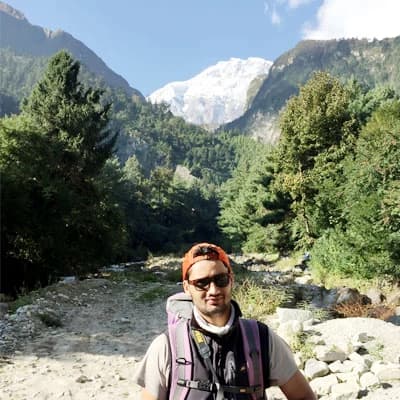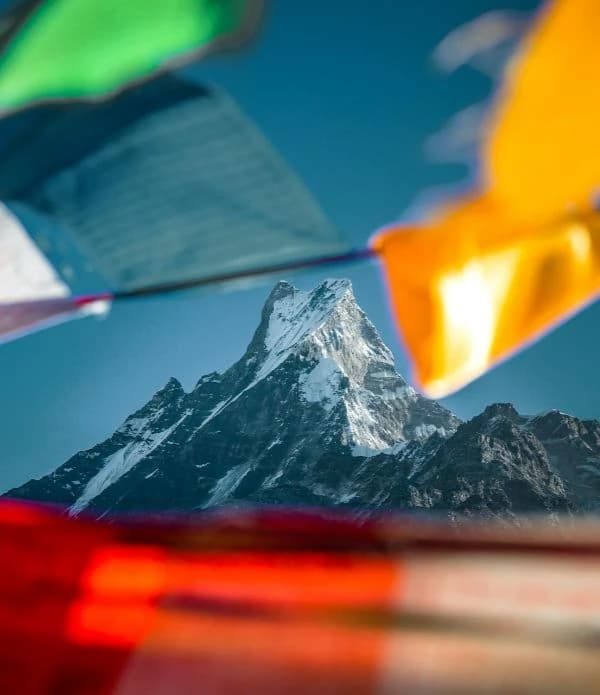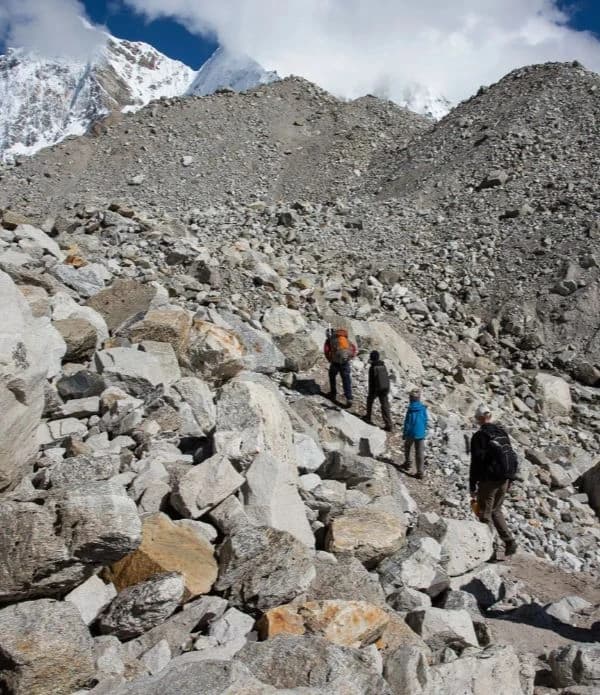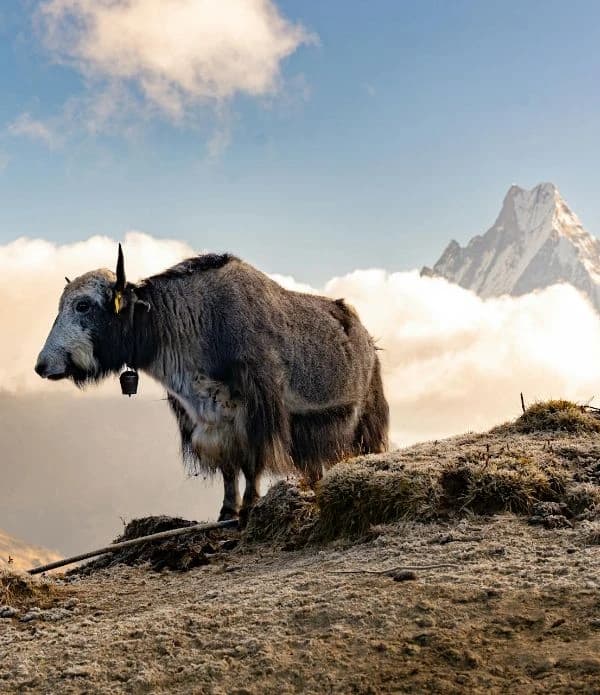Season Overview: At a Glance
|
Season
|
Months
|
Temperature Range
|
Trail Conditions
|
Crowds
|
Visibility
|
Highlights
|
|
Spring
|
March–May
|
0°C to 18°C
|
Dry, blooming, stable
|
Moderate–High
|
Excellent
|
Rhododendron blooms, warm days
|
|
Summer
|
June–August
|
5°C to 25°C
|
Wet, muddy, humid
|
Low
|
Poor
|
Lush greenery, fewer trekkers
|
|
Autumn
|
Sept–Nov
|
–10°C to 20°C
|
Clear, dry, ideal
|
High
|
Excellent
|
Festivals, best mountain views
|
|
Winter
|
Dec–Feb
|
–20°C to 6°C
|
Cold, icy, quiet
|
Very Low
|
Excellent
|
Solitude, crystal-clear skies
|
Spring (March – May): Best for Blossoms & Balanced Weather
Spring, spanning from March to May, is considered one of the best times to trek in the Everest region. With blooming rhododendrons painting the hillsides, stable weather conditions, and clear mountain views, this season offers an unforgettable trekking experience. Whether you're taking on the classic Everest Base Camp Trek or the more challenging Everest Three High Passes Trek, spring provides a great balance of natural beauty and manageable trail conditions.
As winter fades, spring breathes new life into the Himalayas. Lower altitudes are filled with colorful flora, while higher regions present crisp air and snow-capped peaks under bright, blue skies. With relatively mild temperatures and lower chances of heavy rain or snow, the trails are more comfortable and safer compared to harsher seasons.
Spring Highlights on the Trail
- Rhododendron forests in full bloom between Phakding and Tengboche
- Panoramic Himalayan vistas with fewer clouds, especially in April and May
- Greater chance of wildlife sightings such as the Himalayan Monal (Danphe), Nepal’s national bird
- Opportunity to witness local festivals, like Holi (March) or Buddha Jayanti (April/May)
Typical Spring Weather Overview
|
Month
|
Daytime Temp (Avg.)
|
Nighttime Temp (Avg.)
|
Conditions
|
|
March
|
~7°C
|
~-12°C
|
Cold mornings, windy, dry
|
|
April
|
10–12°C
|
~-5°C
|
Warmer, clearer skies
|
|
May
|
~15°C
|
~0°C
|
Warm, sunny, stable
|
Summer / Monsoon (June – August): For the Adventurous & Flexible
Trekking in the Everest region during the summer monsoon season (June to August) is not for everyone—but for the brave and adaptable, it can be a rewarding and peaceful adventure. With fewer trekkers on the trails, vibrant green landscapes, and warm daytime temperatures, this season offers a more immersive and personal experience with nature. However, monsoon rains bring unique challenges that require preparation and flexibility.
While most travelers avoid this season due to unpredictable weather, those who choose to trek now are treated to lush valleys, dramatic skies, and affordable rates. It’s also a great opportunity for photographers seeking dramatic contrast and misty mountain scenes. Just be ready for slippery trails, cloud-covered peaks, and potential flight delays in and out of Lukla.
Summer Highlights on the Trail
- Fewer crowds mean more peaceful trails and quieter teahouses
- Lush greenery and terraced hills at lower altitudes are ideal for nature lovers
- Great deals on accommodation and trekking packages due to off-peak pricing
- Unique cultural encounters in rural villages, less influenced by tourism
- A good chance to explore side trails or less-frequented routes with more solitude
Typical Summer Weather Overview
|
Month
|
Daytime Temp (Avg.)
|
Nighttime Temp (Avg.)
|
Conditions
|
|
June
|
~18°C
|
~-10°C
|
Humid, wet, cloud-covered skies
|
|
July
|
20–25°C
|
~-12°C
|
Heavy rain at lower altitudes, occasional sun
|
|
August
|
~22°C
|
~-15°C
|
Persistent rainfall, muddy trails, warmer days
|
Winter (December – February): Silent Trails & Snowy Beauty
Trekking in the Everest region during the winter season (December to February) offers a raw, peaceful, and snow-dusted version of the Himalayas that few get to experience. With crystal-clear skies, quiet trails, and a serene mountain atmosphere, this off-season trek is ideal for those seeking solitude and silence away from the crowd.
But be warned: freezing temperatures, harsh winds, and snow-covered trails make winter trekking a serious challenge. Only well-prepared trekkers should consider venturing out during this time. The Everest View Trek is a great lower-altitude alternative that still provides stunning vistas without exposing you to extreme elevations.
Winter Highlights on the Trail
- Empty trails and quiet teahouses—perfect for introspective trekkers
- Snow-covered peaks and frozen waterfalls create postcard-perfect landscapes
- Crystal-clear visibility thanks to dry winter air
- Budget-friendly season with lower accommodation and flight prices
- A unique opportunity to see the Khumbu region in its purest, most peaceful form
Typical Winter Weather Overview
|
Month
|
Daytime Temp (Avg.)
|
Nighttime Temp (Avg.)
|
Conditions
|
|
December
|
~4°C
|
~-14°C
|
Cold, clear skies, strong winds
|
|
January
|
~4°C
|
~-17°C
|
Coldest month, bright but freezing nights
|
|
February
|
~4°C
|
~-14°C
|
Slightly warmer days, still cold at night
|
Autumn (September – November): Peak Season for Clear Views & Cultural Vibes
Autumn, stretching from September to November, is hands-down the most popular and picturesque time to trek in the Everest region. With crisp mountain air, stable weather, and vibrant cultural festivals, it’s a season that blends natural beauty with deep cultural immersion. Whether you're planning the classic Everest Base Camp Trek or opting for the more exclusive Luxury EBC Trek—complete with premium lodges and scenic helicopter returns—autumn offers the perfect stage for a truly unforgettable Himalayan experience.
Trekkers during this season are treated to crystal-clear mountain views, comfortable temperatures, and a chance to witness local festivals like Mani Rimdu, bringing the trails to life with prayer chants, masked dances, and spiritual energy.
Autumn Highlights on the Trail
- Crystal-clear skies and panoramic mountain views are ideal for photography
- Cultural experiences like the Mani Rimdu Festival in Tengboche Monastery
- Comfortable temperatures and dry trails make for easier trekking conditions
- The perfect season for Luxury EBC Trek with helicopter exits and premium accommodations
- High energy and excitement on the trails with trekkers from around the world
Typical Autumn Weather Overview
|
Month
|
Daytime Temp (Avg.)
|
Nighttime Temp (Avg.)
|
Conditions
|
|
September
|
12–15°C
|
5°C to -15°C
|
Warm days, cool nights, post-monsoon freshness
|
|
October
|
12–16°C
|
5°C to -14°C
|
Peak trekking weather: clear, dry, sunny
|
|
November
|
9–17°C
|
Down to -20°C
|
Cooler days, chance of snow at higher altitudes
|




.webp&w=1200&q=75&dpl=dpl_5no2mbdoNHZofbQzNp4xwNy1a21g)


